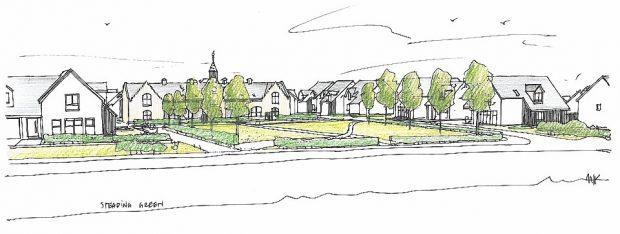Plans to demolish sections of a historic Moray farm to make way for new homes have been recommended for approval by council officers.
Elgin-based developers Springfield Properties submitted a proposal last year to build 106 houses at Linkwood farm, on the south-east of the town.
The development is part of a massive expansion the firm has drawn up for the south of Elgin, and includes knocking down agricultural sheds.
The plot would cover nearly 12 acres of ground, next to high-end properties, near the Linkwood distillery, if it gains approval.
Members of the council’s planning and regulatory services committee will meet tomorrow to debate the scheme.
However, local authority planning officers have advised councillors to rubber-stamp the development.
A report that will go before members stresses the benefits that the complex of 79 private and 27 affordable homes will bring the town.
Elgin Community Council has raised no objection to the work, but highlighted concerns about the capability of the surrounding road network to cope with an increase in traffic.
The plot targeted for the project is currently used by farmer Ian Robertson, but he will relocate his business to the nearby Linkwood dairy farm should the plans be endorsed.
To pave the way for the new houses, farmhouses and outbuildings would have to be knocked down.
But a historic steading building, which was built in 1879 and features a distinctive clock face, would be incorporated into the new design.
The 19th century structure is intended to be the centrepiece in what would be an area of open space in the style of a “village green”.
When Springfield first unveiled the proposal in December, the firm said it would breathe new life into the dilapidated ruin, which has been classed as an “at risk” building, by transforming it into three separate homes.
Land director, Kenny Shand, said: “We have always felt that this important local feature should be retained to give a distinct character and locational context for those who will live here in the future.”
Earlier this year, Springfield tabled plans for a historic transformation of the south of Elgin.
The firm has formed a masterplan for the area which includes designs for 2,500 new homes, two schools, a sports centre, shops and doctors’ surgeries.
